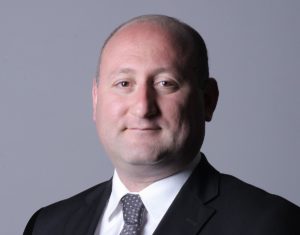YEREVAN — Last September, after several years of e-mail correspondence, I met French-Armenian translator and cultural figure Houry Varjabédian. Born in Casablanca, Morocco, in 1955, Houry has been living in Marseille since 1968, where she studied to become a pharmacist. She cooperates with “Parenthèses” publishing house in Marseille, is engaged in translations from Armenian into French, actively participates in the life of the Armenian community in Marseille and in the Armenian-French cultural dialogue.
Dear Houry, first of all please tell me about the Armenian editions of Parenthèses publishing house.
In the 1980s, architects Varoujan Arzoumanian and Patrick Bardou created Parenthèses, initially for the purpose of publishing the book they wrote together, but later they decided to publish others as well. Instead of constructing buildings, they gradually began to publish books, mostly about architecture and building materials, but also on music, urbanism and photography. And since one of the founders is Armenian, an Armenian section was also created with the somewhat unusual name of “Collection of Armenias.” The first book in this series was the French translation of Avetis Aharonian’s The Road to Freedom, which was followed by other volumes over the years. Recently, the 31st book was published, The Pains of Light by Nicolas (Nigoghos) Sarafian, very beautifully translated by Ara Dandiguian. Our goal is to present Armenian literature, both old and new, to French-speaking readers. When the literature is not translated, it is as if the writers do not exist. When a few years ago, together with historian Anahide Ter Minassian, we published the collection Lands of Our Childhood, in which we collected the works of 40 Armenian writers about their childhood, it was very sad for us to hear from the French: oh, are there so many Armenian writers? Of course, there are much more! Among the books published by “Parenthèses,” I would like to mention Axel Bakunts’s Mtnadzor, Charents’ From Yerevan House of Correction, Zabel Yessayan’s My Soul in Exile, Kostan Zarian’s An Island and a Man, Nigoghos Sarafian’s The Bois de Vincennes, Zareh Vorpouni’s The Candidate, Perch Zeytuntsyan’s The Saddest Man, Vahe Berberian’s In The Name of The Father and The Son, Krikor Beledian’s Thresholds and others. We would like more Armenian books to be published, but we can’t get our hands on them. We publish the Armenian books with our own funds, as they are difficult to sell, the readers are few, we have few or almost no sponsors. I should mention that the French Cultural Center has sponsored us several times. However, when strangers tell us at the book fairs they have read an Armenian book, they loved it very much, even if have forgotten the title (of course, it is difficult for a French to pronounce Mtnadzor), this is the greatest appreciation for us.
I once read that 100,000 books are published annually in France. It must be very difficult to ensure an Armenian presence in this huge sea — or ocean.
In the French book market, we are looking for a tiny place to present Armenian writers alongside the literature of Japanese, Croatian, Vietnamese and other cultures. But we Armenians, are few and there are also few translators from Armenian. Very important works were done by the late Pierre Ter-Sarkissian, who very beautifully translated Shirvanzade, Kostan Zarian and others. Our plans are many, but time is short. We are very interested in Parajanov’s works. When he was imprisoned, Varoujan Arzoumanian formed a defense group for himself in Marseille. We went to the Cannes festival, other places, collecting signatures to release Parajanov. Years ago, at the Parajanov Museum in Yerevan, we saw his letters and other materials and decided to translate them. The late Alice Der-Vardanian translated Parajanov’s letters from Russian: we hope we will be able to publish them one day. Next year, we plan to publish Vahan Tekeyan’s Caesarea in French, as well as a volume from Teotig.
The values of the past are very important, but today also there is good prose being created in Armenia.










